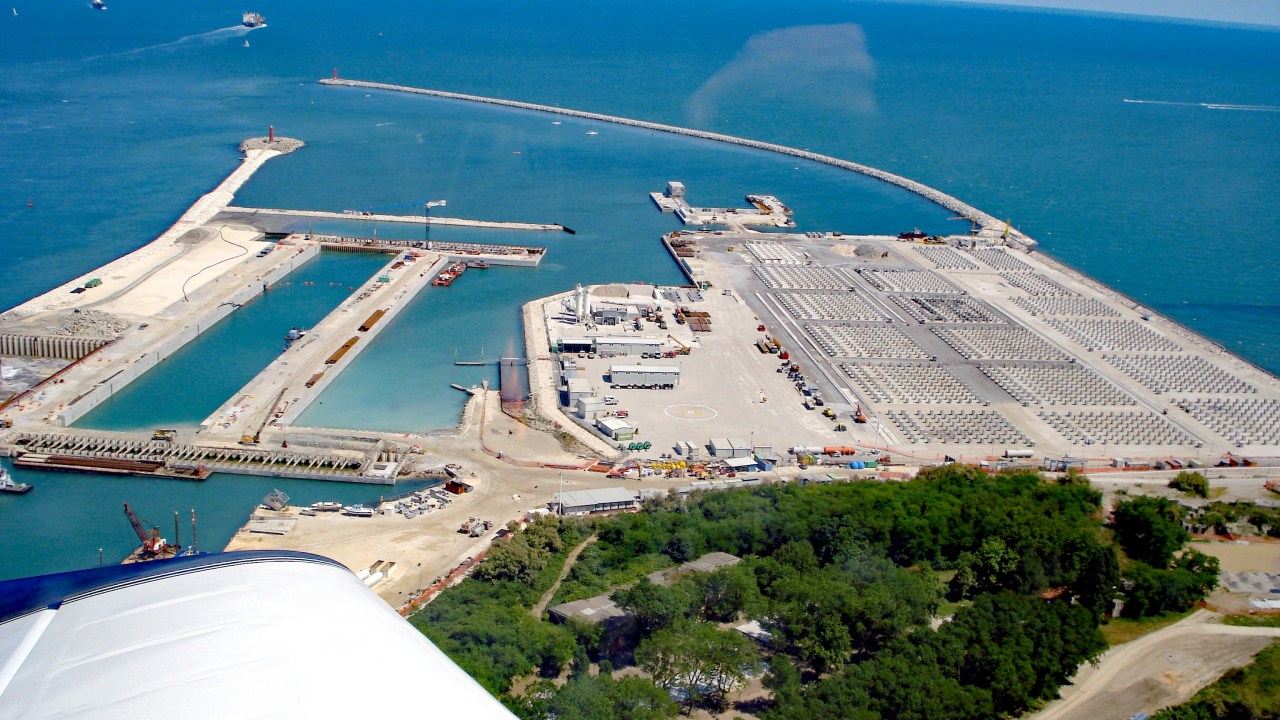The MOSE project in Venice will be fully operational in 2023. At the time, the barriers will be raised when the water level hits 110cm or 43 inches above the regular level. Now, the MOSE project will not help the lowest areas of the city, for example St. Mark’s Square which floods at 90 cm. Yet, the project will help 86% of Venice, including most residential areas.
MOSE is abbreviation for Module Sperimentale Elettromeccanico, or Experimental Electromechanical Module. The project was designed to protect the city of Venice and the Venetian Lagoon from flooding.
It is an integrated system consisting of rows of mobile gates installed at the Lido, Malamocco, and Chioggia inlets that can isolate the Venetian Lagoon temporarily from the Adriatic Sea during acqua alta high tides.
Objectives of MOSE
The aim of the MOSE Project is to protect the lagoon, its towns, villages, and inhabitants. Of course, we have to remember iconic history, artistic and environmental heritage.
![]()
Floods have caused damage in Venice since ancient times. But in the past several years, they have become more frequent and intense due to the combined effect of eustatism (rise in sea level) and subsidence (a drop in land level). Those are caused by natural and man-induced phenomena.
Nowadays, towns and villages in the Venetian Lagoon are 23cm or 9.1 inches lower with respect to the water level than at the beginning of the 1990s. Each year, thousands of floods cause serious problems for inhabitants of the area. Floods also cause deterioration of architecture, urban structures, and the ecosystem.
MOSE, combined with reinforcement of the barrier island, can provide protection from tides up to 9.8ft in height. The aim is to protect the lagoon, even if the most pessimistic hypotheses turn out to be true, such as rise in sea level of at least 24 inches.
The advantage of MOSE is that it is flexible and can be operated in different ways depending on the characteristic and height of the tide. All the gates are independent and can be operated separately.
Just for info, the highest tide in over five decades was in November 2019. It left 85% of the city of Venice flooded and the mayor Luigi Brugnaro blamed the situation on climate change.
How Does it Work?
The inlets are located in Lido, Malamocco, and Chioggia. They divide the Adriatic Sea from the Venice Lagoon. MOSE serves as flood barrier system composed of a network of 78 bright yellow guards. They are split into four barriers, each of them including multiple gates to admit vessesl through.
They offer defense of the entire lagoon. The floodgates lie full of water and completely invisible in housing when inactive. In the event of high tide, compressed air is introduced and the barriers rise up and block the flow of the incoming tide.
MOSE can protect the city of tides up to 3m or 9ft high. It is much higher than most forecasted tides.
The metal floodgates are treated every three months with an anti-corrosive and non-toxic ingredient. Each barrier is a uniform 20 meters (65 feet) wide and varies from 20-30m in length, depending on the depth of the water.
There is also an underwater tunnel that maintains the fins. The tunnel is located 140 steps below the water.
While the process might sound simple, it has been honed to a precise degree. There is a 3-inch gap between each barrier, enough to release some of the intense pressure on the fins as they withstand the Adriatic Sea.
![]()
They are not raised all at once. Instead, they are raised four or five at a time. They can work independently as well. This way, engineers can choose to raise just some of the barriers and slow down the flow of water into the lagoon.
History of the Project
The MOSE project dates many years back in history. At least the idea for it. The idea came first in November 1966, following the flood of Venice. The first Special Law for Venice declared the problem of safeguarding the city to be of priority national interest.
![]()
This marked the beginning of a long legislative and technical process to guarantee Venice and the lagoon an effective sea defense system.
After decades of initial controversy, the building of MOSE began in 2009. The last fin was installed in June 2019 on the Lido side of the Treporti Island.
The Inside Control Room
The Project has to be operated from a control room. As we said before, engineers choose which barrier to raise.
Inside the control room, there is a room of monitors streaming live CCTV footage of boats passing through the three channels. It also feeds in information on weather and tide levels.
One screen monitors the level of the lagoon and the sea level. Blue for the former, red for the latter.
On normal days, both blue and red lines rise and fall together similar to a heartbeat monitor. They spike at high tide and then hit a through at low.
![]()
When the weather is good, there are only a couple of people in the control room on day shift. There is also a team of four in the tunnel. But during bad weather, there are a lot more people present in the control room.
When tides are high, the control room is the 24×7 hub of the whole operation. More than 100 people form a team operating everything, including the control room, the lagoon, and in the underwater tunnel.
There is even accommodation so workers can sleep between shifts.





















